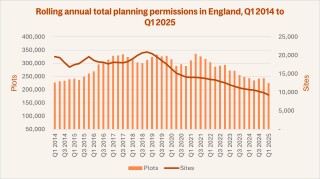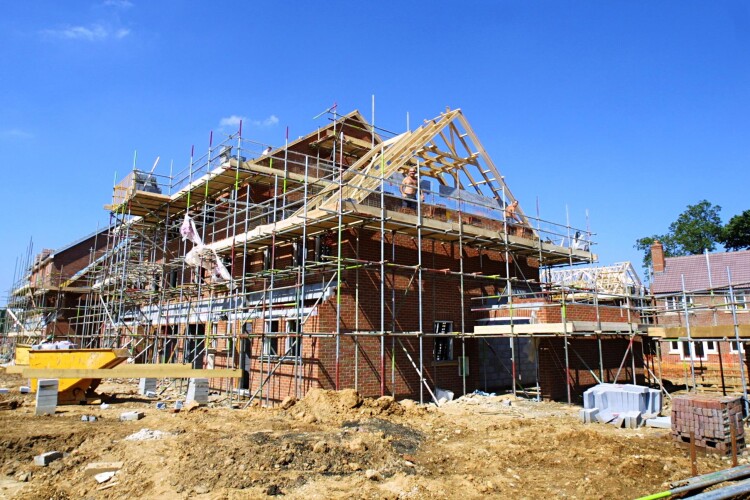This post was originally published on this site
https://www.theconstructionindex.co.uk/assets/news_articles/2024/03/1710401225_1688453021-04jul23-hbf1.jpgThe number of new homes given planning approval in England during the first quarter of 2025 was 39,170 – barely a third the number required to hit the government’s target of 1.5 million new homes by 2030.
Estimates suggest that England is currently building around 200,000 new homes a year, meaning that as we approach the anniversary of the 2024 general election, we are already 100,000 behind the run rate needed to hit the 1.5 million target.
With housing construction levels flatlining at best and planning permissions for new sites and new homes continuing to fall, the likelihood of imminent increases seems remote.
That is the analysis of Home Builders Federation (HBF), whose member firms account for 80% of all new homes built in England and Wales.
The 39,170 planning approvals in England in Q1 2025 was the lowest number of quarterly approvals since 2012 and the third lowest since the data set was started in 2006.
It represents a 55% drop on the previous quarter and a 32% drop on Q1 2024. The figures are included in the HBF’s latest Housing Pipeline report, based on data from Glenigan.
The rolling annual number of units approved in the year to Q1 2025 was just 225,067, a 7% drop on the previous 12 month period and the lowest 12-monthly outturn recorded since 2013. The figure is just 61% of the 370,000 number the government has cited an ambition to achieve, through cumulative local authority housing targets across the country.
The number of projects, or sites approved in Q1 2025 was 2,010, an 18% drop on the previous quarter, the worst quarter since reporting began some 20 years ago, representing less investment in new sites than during either the global financial crisis or the covid lockdowns. The rolling annual number of projects approved in the year to Q1 2025 was 9,275, itself a new record low, and is the twelfth consecutive quarter that the annual rolling number has been the lowest since the report began recording, suggesting that development sites are getting larger.

HBF chief executive Neil Jefferson said: “The latest planning figures are disastrous for an industry and a government looking to increase housing supply over the coming years. With current supply flatlining and permissions for homes to be built over the next few years plummeting, unless urgent interventions are made, there seems little chance of us building the homes we know are desperately needed.
“Whilst the government’s ambition and the swift action on planning were very welcome, increasing housing delivery requires much more than good intentions and planning reform.”
He called the revival of a subsidy scheme for first-time buyers.
“Ministers have to address the fact that potential home owners are unable to buy due to the lack of affordable mortgage lending and the absence for the first time in decades of any government support scheme (for first-time buyers). Similarly, it needs to ensure housing associations are financially able to purchase the affordable homes house builders deliver. Without a functioning market for private or affordable homes it is impossible for industry to deliver them,” Jefferson said.

He concluded: “Planning permissions and house building levels will not increase unless ministers work with industry and tackle the issues preventing companies from pressing the accelerator and investing in the sites, skills and supply chains needed build the homes the country needs.”
Allan Wilen, economics director at Glenigan, said: “The drop in detailed planning approvals has been widespread, but especially marked for larger projects of 125 homes or more. Whilst Glenigan has seen an increase in planning applications in recent months, the current decline appears to reflect earlier declines in planning applications during 2023 and the first half of last year. This underlines the long lead time to secure residential planning consent and the need to streamline the planning system.”
Got a story? Email [email protected]


